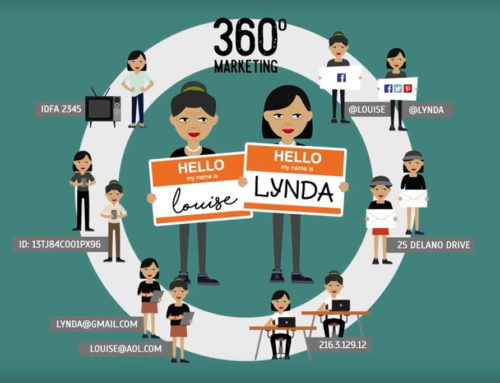Savvy business owners understand the ROI of sharing their high-value messaging with the right audience in order to drive conversions. But the devil is in the details. It’s all about reaching the right audience instead of simply mass messaging. When you target the former, your marketing pays off because you’re speaking to a qualified audience that closely matches your proven customers. But how do you find the right audience? It’s all about the data list you use. But not all data is up to the task. That’s why you need the right partner to ensure your message is heard by your ideal audience.
It Begins with Data
What most people will not tell you is that all data is prone to errors. People make mistakes when they fill out forms, or answer surveys “just for fun.” People who self-report may under- or over-state things like their income, work experience, or dating history. Common mistakes happen, like misspelling a name or forgetting to copy an address correctly by a data entry contractor, resulting in bad data. Which might have you wondering, “how do we deal with error-prone information?” The answer is you need to trust that your data partner really understands the nuances in finding the right data sources. At Sabal Group, we really KNOW data, including the strengths and weaknesses of the major sources of data.
They Know Who You Are
There really isn’t such a thing as data privacy any more. The advent of the digital world has opened the floodgates of information that’s available if you know where to look for it.
Data privacy concerns have been raised by everyone from consumers to Google. The European Union takes data privacy so seriously, it passed the EU General Data Protection Regulation (GDPR) in 2018. While GDPR impacts global businesses, American-only businesses are feeling its impact through a trickle down effect. You see it every time you visit a website and there’s a popup box or banner asking you to accept their cookies, to manage the cookies or to refuse the cookies entirely.
Cookies are a small file stored on your computer. Third-party cookies track your online behavior, collecting information about you, your digital habits, and helping to keep the third party’s brand or goods in front of you via digital ads. All this data is compiled, stored, shared, and sold. But it’s not the only source of information about your potential customers.
There are literally thousands of databases with consumer information available. Government agencies from the local level to the federal level and businesses collect and store information about you. The Department of Motor Vehicles, voter registration lists, postal addresses and zip code files, alumni lists, and customer accounts are teeming with information. There’s an ocean of data just waiting to be tapped. But not every database has the right data for your needs.
Your Neighbor or Your Neighborhood
When a company compiles a data list for you, are they looking for the ideal match or are they simply sourcing a general match? Are they using the right database for your needs? For example, let’s imagine you own a pizza parlor and want to sell more pies. Your data partner delivers a ZIP code list for nearby neighborhoods. Great, because who doesn’t love pizza? It probably won’t make much difference for this kind of campaign, because the most relevant factor is the delivery radius. Right? Wrong.
Your pizza message is reaching neighborhoods like yours. Think about it. How many families in your neighborhood are identical to you (assuming you care about pizza delivery)? If the neighborhood is a mix of young and middle-aged families, single people, and retirees, the results might hit the pizza campaign’s goals. But if the nearby neighborhoods are mostly retirees, or low-income families, or higher-income families, the results will vary dramatically. Relying on a single determining factor, such as ZIP codes, isn’t going to get the results you need.
The same approach is true if you’re marketing an upscale senior living community. You want to drive more qualified leads, more people like your current residents who love their patio homes, are independent, and income secure. Your first thought may be to source names and addresses for those who live within a certain area near your campus. But a smart data partner will look for more information in order to target the right audience. They will work with data suppliers who can match prospects based on such factors as home market value, age, income, interests, and behaviors.
When your marketing campaign needs to closely match your ideal prospect with current customers, inferior data won’t deliver the right results.
The Sabal Approach
Sabal Group understands the nuances of data and, more importantly, we know the ins and outs of creating the best data lists based on the various databases and suppliers. We weight which type of audience you need to reach. We carefully choose which data lists to use based on many factors. Among the things we consider are:
- How often the data is reported
- Whether it’s gathered online or offline
- Whether it’s self-reported or verified
- How closely the data matches your needs
In terms of data sources, we understand the difference between a fire hose and a garden hose. When you want more accurate results, more qualified leads, and a more economical approach to your marketing campaigns, we know a garden hose is the right answer. Because in the world of data, more isn’t always better.
I’d love to chat with you about how you’re targeting your current prospective audience and how we can deliver the right data lists for your needs. I believe Sabal can improve your results. Why? Because we know the difference between ho-hum data and the right data for you.






